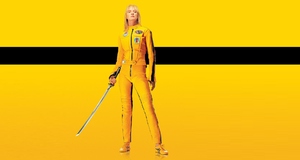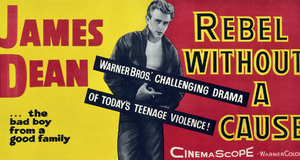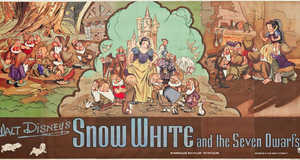Raising Titanic: The World of Communication & the Creation of One of the World's Most Succesful FilmsThough the influence of enfotainment popularity and entertainment journalism was a driving force behind Titanic’s success, its positive critical reception also helped to draw crowds. Few critics hailed Titanic as a masterpiece, but reviews were generally positive. Fox had worried that the melodrama wouldn’t find an audience, but, according to Matthew Bernstein, “when one reads the critics’ reviews, it becomes clear that Titanic’s popularity arose [from] the sheer diversity of its various elements” (Bernstein 15). Critics noticed that Titanic wasn’t just an estrogen-charged romance, but rather a romance for lovers of action films and period pieces looking for a nostalgic reminder of the past (Bernstein 15-16). Titanic’s visual breakthroughs also astounded critics who saw “Cameron’s treatment of the ship as emblematic of his admiration for the moviemaking apparatus itself and for futuristic technology (Bernstein 21). Bernstein theorizes that the critical response towards Titanic mirrored public sentiment at the time and is, in itself, an explanation of the film’s popularity. Marketing Research, Advertising, and TitanicAfter having pumped over $200 million into Titanic, Fox and Paramount weren’t willing to let the film sink at the box office. By gauging the responses of test audiences, the studios’ advertising and marketing teams sold the film to audiences worldwide.The audience at Titanic’s first test screening, held by the National Research Group (NRG) in Minneapolis, Minnesota, included anxious studio executives observing audience reaction. Their fears were quelled by the audience’s enthusiastic feedback throughout the film and heart-felt cheers and applause as the credits rolled (Parisi 187-192). Post-screening surveys and focus groups conducted by NRG showed unprecedented approval ratings for the film’s stars, especially lead actor Leonardo DiCaprio. Furthermore, all audience members polled said they had heard of the film before being picked to attend the screening, a testament to the impact of the buzz generated by entertainment journalism (Parisi 187-192). One piece of data collected by NRG at the screenings particularly excited Cameron: when asked to rate their six favorite scenes from the film, audience members, on average, rated the sinking of the ship sixth (Parisi 191). This fact demonstrates that audiences enjoyed the film not only for its action, but for its substance as well; they found the romantic story engaging and entertaining. The volume of information collected by NRG at the screenings would prove invaluable in marketing the film to the viewing public. Screenings revealed that Titanic had an important marketing asset: star Leonardo DiCaprio. A heart-throb young actor made famous among teenage girls by his performance in Romeo + Juliet (1996), a modern day retelling of the classic romance, DiCaprio defined “marketable.” According to Melanie Nash and Martti Lahti: "The single most important aspect of the enormous appeal of this film to its primary audience, young girls, is the star presence of Leonardo DiCaprio […]. Titanic drew heavily on DiCaprio’s preexisting fan base of teenage girls in conceiving and addressing its audience, through both generic structures and marketing strategies." (Nash and Lahti) Though DiCaprio was reluctant to pose for magazine covers, he and his publicist negotiated with Paramount and the actor agreed to pose for two high-profile magazines: Vanity Fair and Newsweek (Parisi 211-212). The circulation of the magazines, and additional press related to the photo shoots, drew the attention of legions of fans and teenage girls, clamoring to see the handsome actor’s latest feature. By casting DiCaprio, Cameron and casting director Mali Finn inadvertently gave the marketing team considerable momentum. The film’s $200 million dollar budget, widely covered in the media, also interested test audiences. Because it was common knowledge, the film’s budget caused audiences to watch it differently. Initial reports on Titanic’s budget were critical, a fact which worried studio executives. However, according to NRG, “most were aware of its astronomical budget, but it hadn’t biased them against the film. If anything, they wanted to see what $200 million looked like on screen. One woman said the dialogue in the first-class dinner scene alone was worth $200 million” (Parisi 189). Fox and Paramount took note of this in marketing the film; its high class themes and its high class cost allowed them to market it as a premium product. Justin Wyatt and Katherine Vlesmas argue that, “by intentionally foregrounding the film’s budget in the media, the studios could distinguish the quality of the Titanic viewing experience from other movies in an age of uniform ticket prices” (Wyatt and Vlesmas 37). Marketing advantages for the film, however, could only take it so far; actual advertising was still needed to draw audiences. The star-power of Leonardo DiCaprio, the tangible and bankable budget of the film, as well as human interest in its powerful love story, would all factor into the Titanic advertising campaign. Arthur Cohen, the head of marketing at Paramount, was put in charge of advertising and marketing the film to the public (Parisi 199). Cohen coined catchy slogans which embodied the scope and story of the film such as “Collide with Destiny” and “Nothing On Earth Could Come Between Them” (Parisi 199). Coupled with artwork showing off Titanic’s breathtaking sets, as well as its breathtakingly handsome star, these slogans would be used in posters and trailers for the film. Initial art concepts focused on the action-appeal of the film, but screenings had revealed that though popular, the action sequences weren’t as appealing as the storyline. An action version of the trailer as well as a softer story-driven version was tested, but as expected, audiences reacted more favorably to the story-driven one which showed off the film’s substance (Parisi 201). According to Paula Parisi, “Theater owners reported that audiences were enthusiastically cheering the Titanic trailer, which […] became an event in itself” (Parisi 200). Audience reaction to the trailer was a testament to the quality job done by the filmmakers as well as the advertising and marketing prowess of Cohen and his team. However, constructing advertisements is not the whole story of the Titanic marketing machine. Posters and trailers can get audiences into theaters, but the rigorous marketing, authorized and unauthorized, that surrounded Titanic kept them coming back in strong numbers for nearly a year after the film opened. Within months of the film’s release, Titanic merchandise began showing up everywhere. Aside from the soundtrack and companion books, Titanic related merchandise was sparsely offered at the time of the film’s release (Elliott). However, according to a 1998 New York Times article, “the spectacular performance of Titanic […] is sending marketers scrambling after the fact to generate ancillary products and advertising. The boatload of tie-ins – some authorized, others not – range from additional albums and books to TV programs and films to tapes and ads centered on shipwrecks” (Elliott). The article’s author, Stuart Elliot, even goes as far as to suggest of Titanic that “it may also be rewriting the rules of movie marketing” (Elliott). The surge in post-release Titanic merchandise is interesting as it demonstrates the value of popular films to marketers unrelated to its production as well as the benefit of ancillary merchandise to a film’s box office performance. If Titanic Were Released Today (Or Tomorrow)The Internet was a fledgling network in the early 1990s. Though it was prevalent enough for a mentionable amount of discourse on the production of Titanic, as well as the occasional DiCaprio fan-site, the Internet wasn’t nearly as driving a force in the nineties as it is today. With a plethora of social media websites and blogs giving rise to new viral marketing opportunities, there is no doubt that if Titanic were released today, it would shatter its own records. The rise of websites such as Facebook, Twitter, YouTube, and countless blogs, offer movie studios an opportunity to reach an unprecedented amount of people with news about current projects. Additionally, this instantaneous access comes free of cost. In a world of soaring advertising prices and struggling DVD sales, this kind of free publicity is priceless. According to the New York Times, “Social networks like Facebook and Twitter have […] changed the publicity game in Hollywood.Continued on Next Page » Suggested Reading from Inquiries Journal
Inquiries Journal provides undergraduate and graduate students around the world a platform for the wide dissemination of academic work over a range of core disciplines. Representing the work of students from hundreds of institutions around the globe, Inquiries Journal's large database of academic articles is completely free. Learn more | Blog | Submit Latest in Film & Media |
















